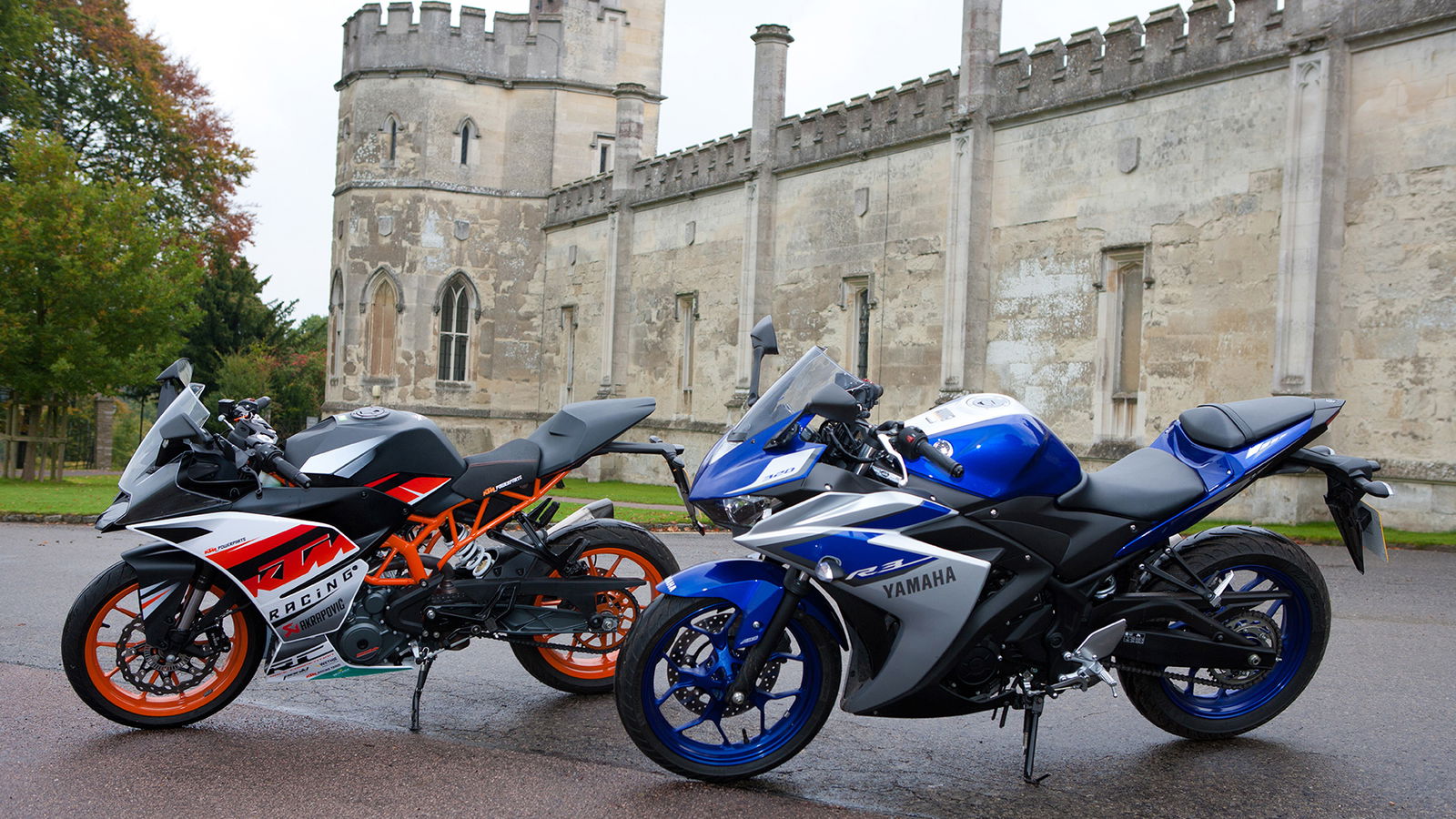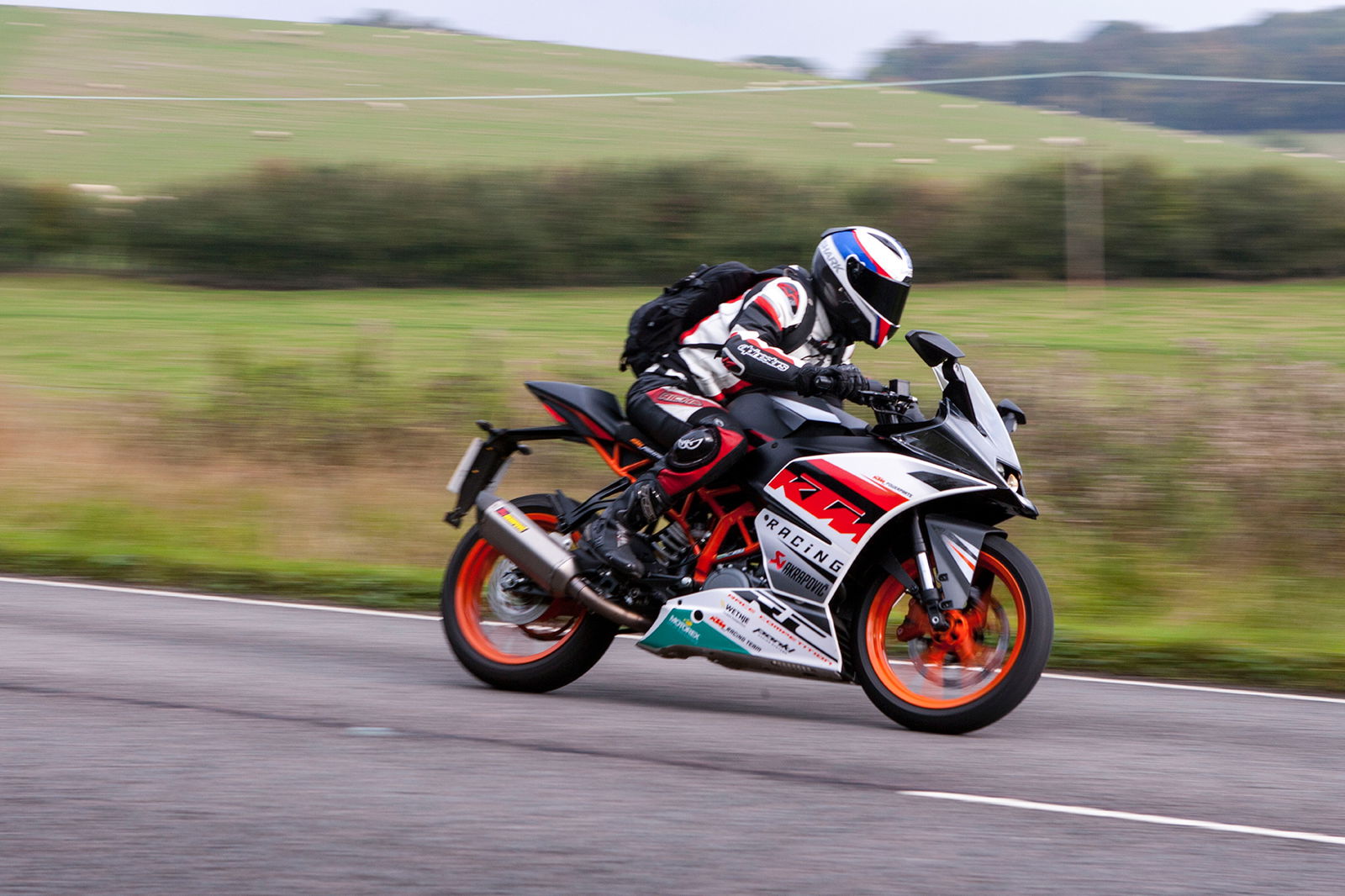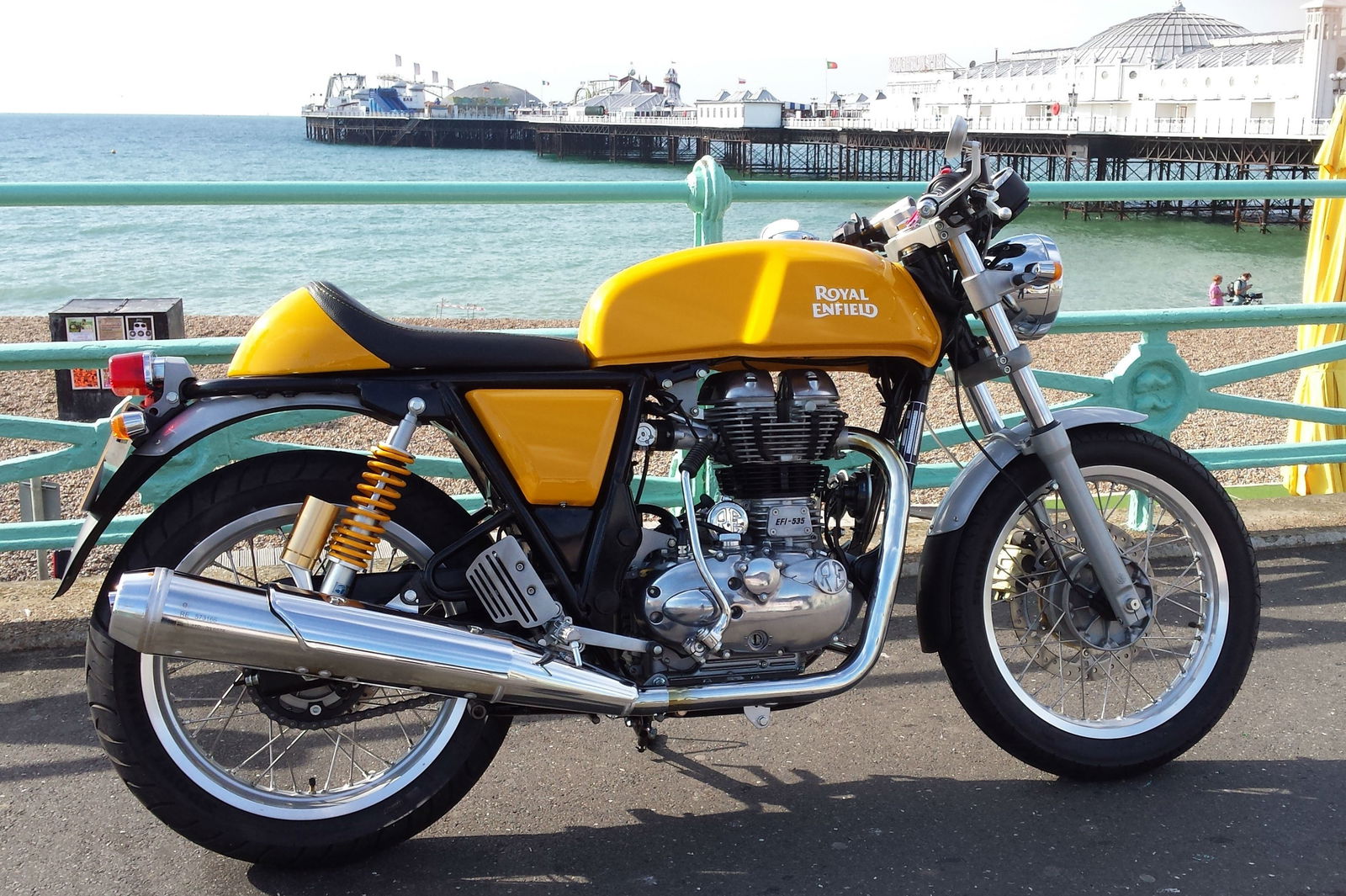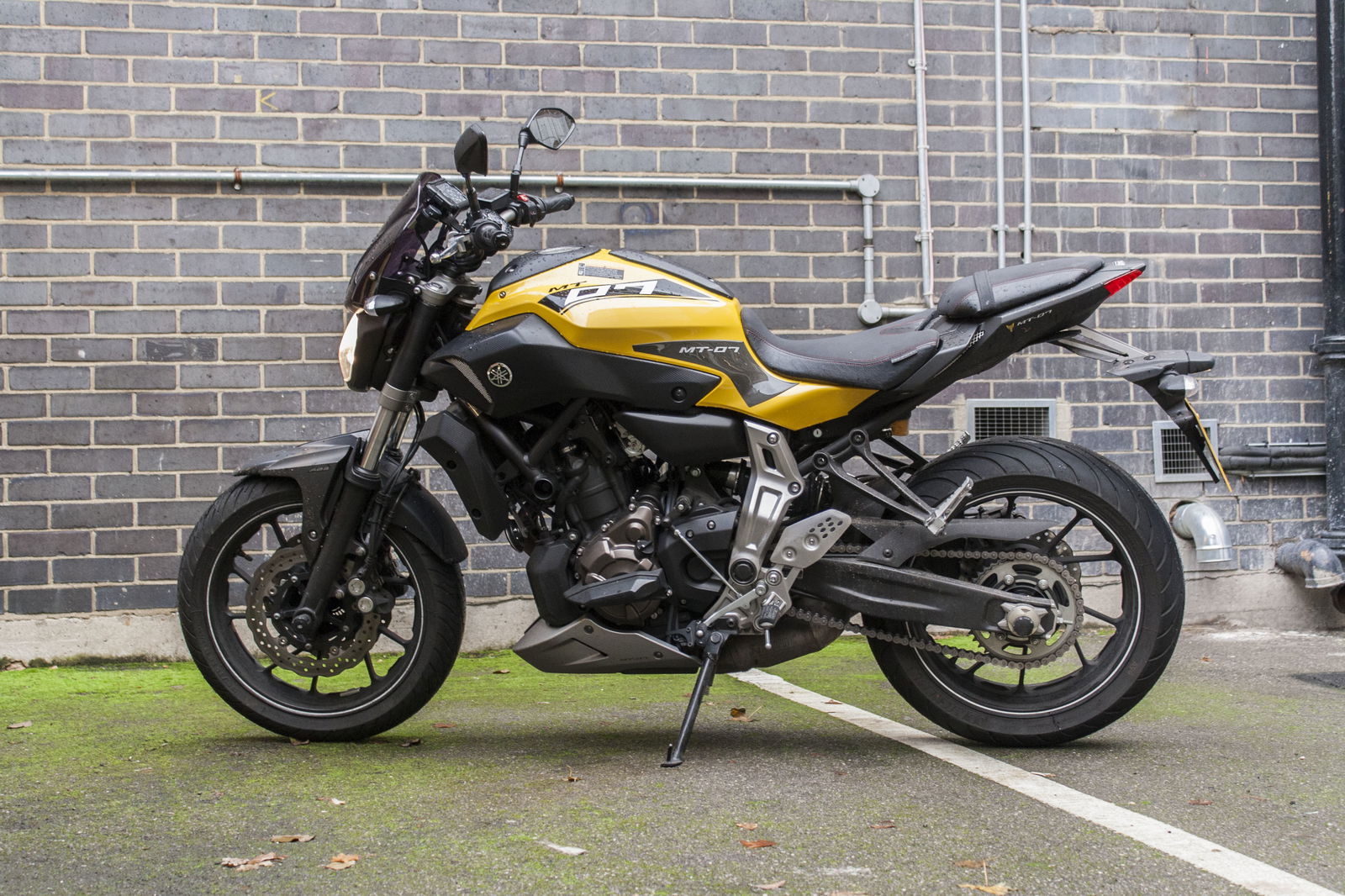Head-to-head: KTM RC 390 vs Yamaha R3 review
The two newest, hottest sub-400cc A2 sports bikes set against each other

THERE'S never been a better time to be a young, free and in possession of an A2 licence. Manufacturers are once again making exciting small capacity bikes that will appeal to new riders who don’t want to ride something so bland it could be a washing machine.
If that sounds like you, then the two newest bikes in the sub-400cc entry-level sports bike class, Yamaha’s R3 and KTM’s RC 390, are certain to be on your radar. Although they have different personalities, both offer newer or younger riders the prospect of capable commuting, heaps of weekend fun, frugal fuel consumption, sports bike looks and triple digit top speeds… allegedly. They both come in at a shade under £5,000; the KTM costs £4,998 with the Yamaha costing a bit less at £4,799.
I wouldn’t normally start with looks, but in this case I’ll make an exception because the styling of these two gives an insight into some of their less superficial characteristics.
Thanks to its orange trellis frame, Power Parts sticker kit and Akrapovic exhaust, our KTM looks like it means business; like a pukka little race bike. Even in its slightly more subdued standard trim, the RC 390 still looks like a special bit of kit, it makes a statement, like a sports bike should. The Yamaha R3, though sharply styled, is less aggressive and more reserved – bringing a touch of class to counter the KTM’s brashness.
But if looks don’t matter too much, power certainly does, and if I was on an A2 licence, I’d want as much as I was allowed. The R3 has a 321cc parallel-twin engine that makes 42hp (5hp less than the 47hp A2 limit), while the RC 390’s 373cc single cylinder motor makes 44hp, and is bang on the A2 power-to-weight limit.
The Yamaha delivers its power predictably and with sublime smoothness across its rev range. It gives you its best when revving hard, which it does keenly. Be gentle with it, and the engine can feel like it’s a little too linear to be really exciting, although that’s forgotten once the needle hits 9,000rpm and then surges towards the 13,000rpm red line with an urgency that’s missing lower down in the range. It fuels well and the R3 makes easy work of slow speed, stop/start town riding.
The same can’t be said of the KTM; while it’s not hard to ride in town, it’s got a more aggressive low-speed throttle response than the smooth R3. That means the KTM's low speed stop/start filtering manners are less refined. It’s not problematic though, and serves as a reminder that the RC’s thumping single piston is game for a faster pace.
The KTM’s sense of urgency is one of the things that make it such a fun bike. As well as having a more garish set of graphics, the RC 390 also has an engine with a bolder character. It’s got more instant torque than the R3. Where the Yamaha comes alive when it’s being pinned, the KTM's single piston means it's more exciting at lower revs. It also beat the R3 (just) in a traffic light drag race, which is crucial when you’re 19 and showing off.
The KTM's engine can feel like it runs out of revs too quickly, hitting the limiter at just over 10,000rpm. It’s just getting into its stride at around 5k and I found it easy to hit the limiter if I wasn’t constantly thinking about its insatiable lust for the next gear. Because of this, I found the KTM’s shift light a bit annoying too. It comes on at around 7,500rpm as a friendly reminder to flick the gear lever up, and stays on. It’s red, so under hard acceleration the dash just frantically blinks out an angry morse code message. Stop this depravity, you say? Then what are we here for?
I had the most fun on the KTM on twisty, tight roads where there were lots of opportunities to use the engine’s grunt. The Yamaha was good here too, but because of its revvy engine it’s most enjoyable with the needle hovering near the red line on a fast, flowing road. Make no mistake though, both these bikes encourage you to ride them as fast as they can go, which is a little over 100mph. The top speed might not be massive, but speed doesn’t always equal fun. Because of their capacities, these two are exploitable on the road without doing prison-figure speeds and getting home feeling like you need to lock the door and hide in a cupboard for the next 12 hours.
Thankfully, low speeds don’t mean second rate stoppers. Both bikes are reined in by capable brakes but the Yamaha’s singe front disc, twin-pot front caliper felt better than the 390's, with a bit more instant bite. The KTM also has a single disc, twin-piston setup at the front (made by Brembo subsidiary Bybre) and although it’s powerful enough, I had to pull the lever more to start getting the best out of it.
The KTM, however, feels better with anchors on hard. It has a riding position to match its sports bike looks, more aggressive than the R3. Under braking, it puts you more over the front wheel, creating a sense of the tyre burying itself into the road. With a surprisingly upright riding position, the R3 doesn't give you the same sense of direct connection to the front tyre, but the chassis feels very stable - probably more so than the KTM's - when you’re really scrubbing off speed.

Both bikes are comfortable and, importantly for A2 licence holders, user-friendly. Both eschew conventional below-the-yoke clip-ons for higher bars; the Yamaha has clip-ons mounted above the top yoke (which looks like it’s made out of a piece or girder) while the KTM's bars slot into the yoke itself, and sit level with it. With the bikes in profile, it’s easy to see how high the bars are. It makes them easy to manoeuvre, gives them plenty of steering angle and means that new/young riders aren’t pitched arse up, head down.
The bars are one of the reasons the Yamaha doesn’t feel as sporty at the KTM. Ridden in isolation, it’s not immediately noticeable, but after a day spent swapping between the two, the difference is stark. After jumping off the RC 390, I realised just how much more upright the R3 is. In comparison, the KTM feels more like a scaled down sports bike.
Regardless of ergonomics, both handle well. Their diminutive size and agility make them enormous fun to ride across fast and flowing roads or twistier tarmac, whether you’re grabbing them by the scruff of the neck or being smoother than Barry White on date night.
The KTM feels slightly more eager to drop in to a turn, but both are stable and confidence-inspiring from the get-go, and not lacking precision when things get faster. They share soft suspension that, for the most part, handles British roads with aplomb. The KTM just loses out to the Yamaha because of its softer rear end. Sitting on the RC 390 makes the WP shock sag a fair bit, and it easily uses the rest of its travel dealing with average road surfaces. If things get bumpy, the shock can get flustered and buck you about, although it's pre-load adjustable so you may be able to dial out some of this bounce.
When it comes to grip, the KTM’s Metzler Sportec M5 Interact tyres have got the best of the Yamaha’s Michelin Pilot Streets. The Metzlers provided good grip on road surfaces ranging from super smooth (well, for England anyway) to sketchy, and in a range of temperatures. They coped well in the wet and in the dry worked consistently well, allowing me to have a blast trying to exploit the KTM’s low-down grunt when firing off roundabouts or out of tight turns. The Michelins on the R3 are fine, but never gave me as much confidence as the rubber on the KTM.
I really like the R3’s dash – it’s simple, clear and easy to read at a glance. It worked without fault, unlike the KTM’s all-digital affair, which suffered from an intermittent neutral light. I think the RC 390’s dash looks like a handheld video game from the '80s, except what it’s telling you is more exciting than playing Donkey Kong. The rev counter that runs along the top of the screen isn’t as clear as the R3’s and it looks cheaper, but ride an RC 390 and you’ll soon get over it. Make sure you keep an eye on how much petrol you've got though - a couple of times our bike's gauge dropped from near half full to a low-fuel warning telling us we had 20 miles left. That rapidly became less than 10 miles, so I never completely trusted its accuracy.
The R3 isn’t perfect either – there are a few places where it’s evident the bike’s been built to a price. As I mentioned previously, the top yoke is slabby and ugly, and the bars meet the fork-tops with chunky metal brackets, which look like scaffolding joins. The rear-sets, rear brake pedal and heel plates have a cheap look too, but it doesn’t detract from the riding experience.
The two bikes both deliver optimum A2 thrills but have quite distinct characters; the KTM more aggressive looking and feeling, the Yamaha smoother and almost commuter-ish in contrast, but just as much fun given a thrashing.
If you’re after a flexible, friendly-but-fun engine in a bike that can do everything with ease and still reward when caned, the R3 is the one. It’s more graceful than the RC 390.
But the KTM is sexier, less compromising and more engaging – and more exciting for it. It's close, but I suppose I have to call it, so the KTM wins. It's a bit less refined than the Yamaha and has a few more flaws, but it's a proper little sports bike with bags of character and performance that demands your attention.
KTM RC 390
Engine: 373.2cc single-cylinder
Brakes: Bybre four-piston radial fixed caliper, 300mm disc (F), Bybre single-piston floating caliper, 230mm disc (R)
Power: 44hp
Torque: 25.8lbft
Weight: 147kg (dry)
Tank capacity: 10 litres
Seat height: 820mm
Price: £4,998 plus on-the-road charges
Yamaha YZF-R3
Engine: 321cc parallel-twin
Brakes: Two-piston sliding caliper, 298mm disc (F), single piston, 220mm disc (R)
Power: 42hp @ 10,750 (30.9kw) 0.18kw per kg
Torque: 21.8lbft @ 9,000rpm
Weight: 169kg (wet with full tank fuel)
Tank capacity: 14 litres
Seat height: 780mm
Price: £4,799 plus on-the-road charges

